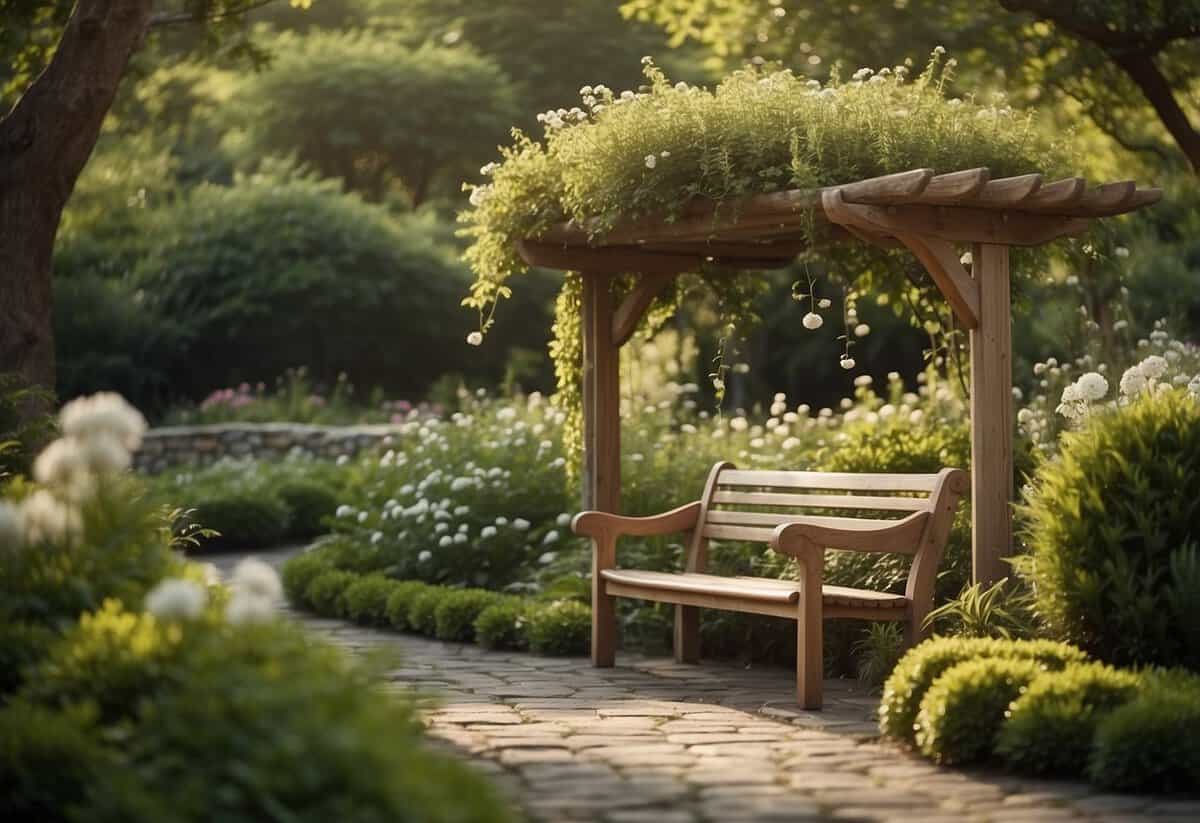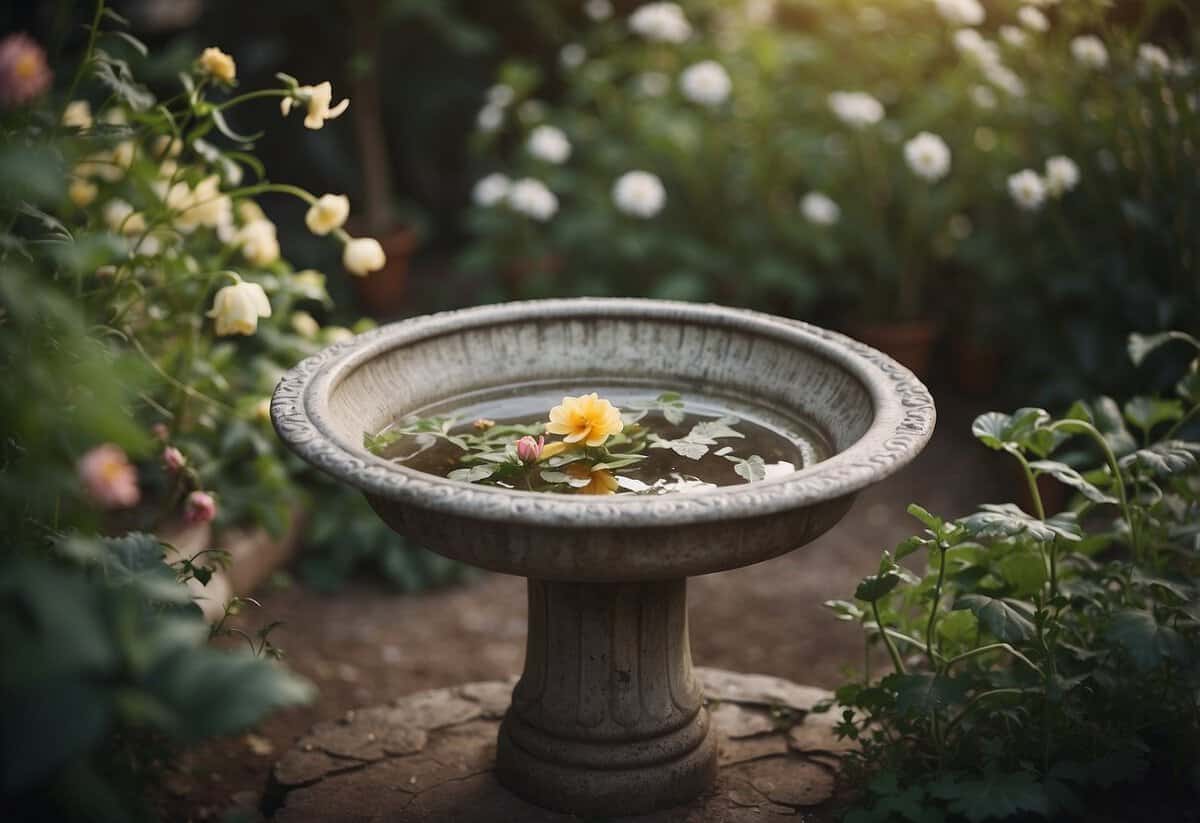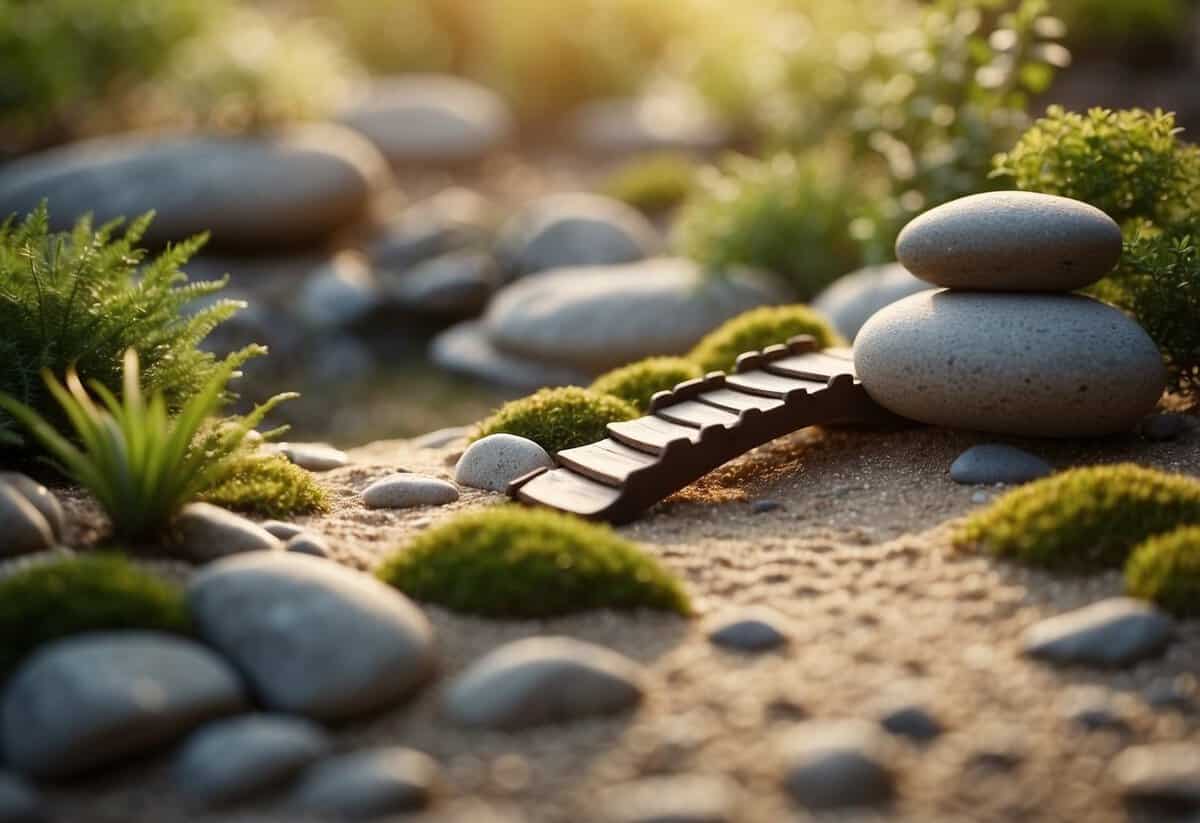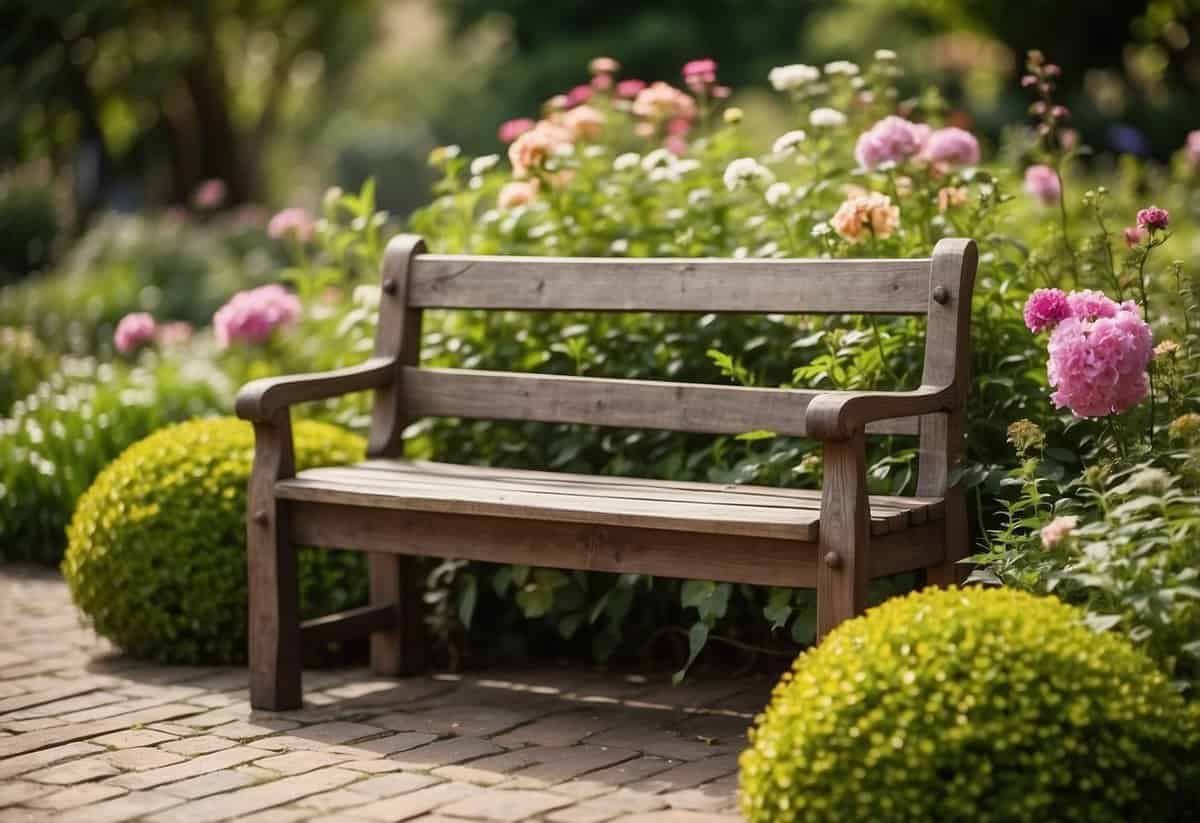Aesthetic Garden Ideas: Transform Your Outdoor Space
Aesthetic garden ideas can transform your backyard into a beautiful and relaxing space. Whether you have a small balcony or a large yard, there are plenty of ways to make your garden look stunning. From adding colorful flowers to creating cozy seating areas, the possibilities are endless.

Why should you consider an aesthetic garden? An attractive garden not only enhances the look of your home but also provides a peaceful retreat from the hustle and bustle of daily life. Imagine sipping tea under a beautifully decorated pergola or enjoying a moonlit swing in a lush, green oasis.
1) Vertical Planters

Vertical planters can save space while adding a unique look to your garden. You can use different materials like wood, metal, or plastic to create these planters.
Try hanging planters on a wall or fence. This can change the appearance of your space and give you more room for plants.
For a creative twist, consider using an upcycled palette garden. This is both eco-friendly and stylish.
2) Solar Garden Lights

Adding solar garden lights to your garden is both eco-friendly and beautiful. They come in many styles, from lanterns to pathway lights.
You can also explore some creative ideas, like using clay pots to make a lighthouse. Or use frosted bottles to give your garden a mystic look.
Solar lights not only save energy but also make your garden safer and more inviting at night.
3) Vintage Birdbath

Adding a vintage birdbath to your garden can bring charm and elegance. Look for one made from materials like stone or hammered metal. These designs often feature intricate details that lend an old-world feel.
You can find beautiful options in copper, aluminum, or galvanized metal bird baths.
Consider placing it near bushes or flowers to create a welcoming environment for birds. This natural setting helps the birdbath blend seamlessly into your garden.
4) Zen Garden Sand Kit

A Zen garden sand kit is a great way to bring peace into your space. These kits come with a small tray, sand, and miniature tools for raking.
You can create calming patterns by raking the sand in different directions. Add tiny rocks or even a small statue for extra charm.
This kit is perfect for your desk or a quiet corner at home, offering you a mini retreat whenever you need it.
5) Recycled Metal Art

Recycled metal art can bring character to your garden. Using old metal pieces not only helps the environment but also adds a unique charm to your space.
You can find many ideas and inspirations for recycled metal art online. Some artists create stunning metal sculptures from scrap metal.
Mix different metals, textures, and colors to make your garden art stand out. Try using rusty items like old shovels or wagon wheels to give a vintage feel.
Adding recycled metal art can make your garden a conversation starter. Happy decorating!
6) Miniature Fairy Garden

Creating a miniature fairy garden can add a touch of magic to your yard. Use ferns, moss, and creeping thyme for ground cover, especially in shady spots. Add vining plants like morning glory or sweet peas to fill trellises.
Include tiny accessories like fairy houses or figurines. You can also use small stones or marbles to create paths and ponds. For more ideas, check out these fairy garden tricks.
7) Hanging Lanterns

Hanging lanterns can add a magical glow to your garden. You can hang them on tree branches or low-level foliage for a cozy ambiance.
They are easy to set up and require minimal effort. Choose lanterns that match your garden’s theme, whether rustic, elegant, or modern. This simple addition can create enchanting shadows and a warm atmosphere. For ideas, check out these garden lantern designs.
8) Suave Succulent Display

Looking to add some style to your garden? Try a suave succulent display. Succulents come in various shapes and colors, making them perfect for a stunning arrangement.
Use old concrete cinder blocks to create a unique stacked look. Each hole can hold a different succulent, giving a layered effect to your garden.
Another idea is creating a vertical succulent wall by mounting small pots on a frame or fence. This saves space and adds a striking visual element to any outdoor area.
Mixing these with rocks can accentuate the natural beauty and vibrant hues of the succulents.
9) Rustic Wooden Bench

A rustic wooden bench adds charm to any garden. Its natural look blends well with greenery.
You can choose weathered wood for a vintage feel. This type of bench can be a cozy sitting spot or a focal point in your yard.
Rustic benches are often easy to build yourself. They can be made from reclaimed wood, giving new life to old materials.
For more ideas, you can explore rustic wooden garden bench ideas. Adding a bench like this will make your garden inviting and picturesque.
10) Water Feature Fountain

A water feature fountain can transform your garden into a serene oasis. The soothing sounds of running water create a peaceful atmosphere, perfect for relaxation.
You can choose from various designs, like a cast stone fountain with clean lines or a simple low bowl fountain that blends seamlessly into different garden styles.
If you want to make a DIY project, consider using an iron teapot and an old whiskey barrel. This creative approach adds a unique touch to your garden. For inspiration, check out these DIY Outdoor Fountains.
Design Principles For Aesthetic Gardens

Creating an aesthetic garden involves thoughtful planning and careful selection of elements. Key principles include achieving balance and symmetry, as well as selecting a harmonious color scheme and the right plants.
Balance And Symmetry
Balance and symmetry play crucial roles in garden design. A balanced garden feels stable and inviting. There are two types of balance: symmetrical and asymmetrical.
In symmetrical balance, both sides of the garden mirror each other. For example, you can place identical plants or structures on either side of a central path. This formal look works well for traditional or classic gardens.
Asymmetrical balance is less rigid but still balanced. Instead of mirroring, you use different elements that have equal visual weight. For instance, a large tree on one side can be balanced by a group of smaller shrubs on the other.
Using symmetry or balance helps your garden look organized and cohesive. Walkways, fountains, and garden beds can all be used to achieve this effect.
Color Schemes And Plant Selection
Choosing the right colors and plants is vital for an aesthetic garden. Color schemes set the mood and highlight features of your garden. Monochromatic, analogous, and complementary color schemes are popular choices.
A monochromatic scheme uses variations of one color. This could mean using different shades of green to create a soothing and harmonious look.
Analogous schemes use colors next to each other on the color wheel, such as yellow, yellow-green, and green. This creates a unified and pleasing appearance.
Complementary schemes involve colors opposite each other, like red and green. These provide a striking and lively contrast.
Plant selection is also crucial. Tall plants should be placed at the back of garden beds, while shorter plants go in front. Mixing plants with different textures and foliage adds depth and interest. Consider using fragrant plants like lavender for additional sensory appeal.
By carefully selecting colors and plants, you can ensure your garden is both beautiful and enjoyable throughout the year.
Creating Focal Points

Focal points in a garden are important because they draw the eye and set the mood. They can be created using garden sculptures and incorporating water features.
Using Garden Sculptures
Garden sculptures add personality and charm. They can be made from stone, metal, or ceramic. You might place a sculpture at the end of a pathway or in the center of a flower bed to capture attention.
Choose sculptures that match the style of your garden. For a modern garden, sleek metal sculptures work well. For a more rustic look, stone or wood sculptures fit best.
Using sculptures of animals, people, or abstract shapes can provide a unique visual appeal. Consider the scale and proportion of each piece to ensure it integrates well with the surrounding plants and structures.
Incorporating Water Features
Water features such as fountains immediately attract attention. The sound of flowing water adds a relaxing ambiance to your garden. You can place a fountain in the center of a patio or at the end of a garden path.
Ponds or small waterfalls also make excellent focal points. They provide a habitat for local wildlife and add a natural feel to your space.
Select water features that complement your garden’s design. For smaller gardens, a wall-mounted fountain might be ideal, while larger spaces can accommodate expansive ponds or multi-tiered fountains. Choose features that are proportionate to your garden to maintain balance and harmony.
Sustainability In Aesthetic Gardening

When you create an aesthetic garden, you can also make a positive impact on the environment. By choosing the right plants and using water wisely, your garden can be both beautiful and sustainable.
Choosing Native Plants
Selecting native plants is one of the best ways to make your garden sustainable. Native plants are adapted to your local environment, which means they need less water and are more resistant to pests and diseases. This reduces the need for chemical pesticides and fertilizers.
Benefits of Native Plants:
- Less Maintenance: Since they thrive in local conditions, they require less care.
- Support Local Wildlife: Provide food and habitat for local insects, birds, and other wildlife.
- Water Efficiency: Adapted to regional rainfall, reducing the need for supplemental watering.
Try incorporating plants like coneflowers, black-eyed Susans, or local grasses. These options not only look great but also help conserve resources and support biodiversity.
Water Conservation Techniques
Water conservation is crucial for a sustainable garden. One effective way to save water is by installing a drip irrigation system. This method delivers water directly to the roots, minimizing evaporation and runoff.
Water Conservation Tips:
- Rain Barrels: Collect rainwater to use during dry periods.
- Mulching: Add mulch around plants to retain soil moisture.
- Drought-Tolerant Plants: Choose plants that require less water, such as succulents and lavender.
By using these techniques, you can significantly reduce water waste. You’ll also create a garden that can withstand periods of drought, ensuring that it remains beautiful and healthy no matter the weather.







